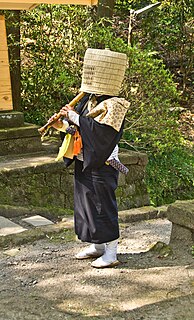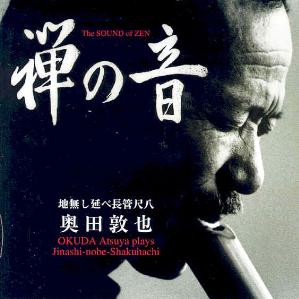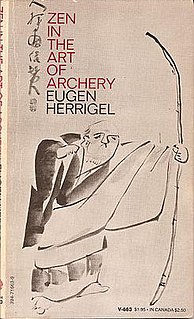 W
WBuddhism played an important role in the development of Japanese art between the 6th and the 16th centuries. Buddhist art and Buddhist religious thought came to Japan from China through Korea. Buddhist art was encouraged by Crown Prince Shōtoku in the Suiko period in the sixth century, and by Emperor Shōmu in the Nara period in the eighth century. In the early Heian period, Buddhist art and architecture greatly influenced the traditional Shinto arts, and Buddhist painting became fashionable among wealthy Japanese. The Kamakura period saw a flowering of Japanese Buddhist sculpture, whose origins are in the works of Heian period sculptor Jōchō. During this period, outstanding busshi appeared one after another in the Kei school, and Unkei, Kaikei, and Tankei were especially famous. The Amida sect of Buddhism provided the basis for many popular artworks. Buddhist art became popular among the masses via scroll paintings, paintings used in worship and paintings of Buddhas, saint's lives, hells and other religious themes. Under the Zen sect of Buddhism, portraiture of priests such as Bodhidharma became popular as well as scroll calligraphy and sumi-e brush painting.
 W
WA Daruma doll is a hollow, round, Japanese traditional doll modeled after Bodhidharma, the founder of the Zen tradition of Buddhism. These dolls, though typically red and depicting a bearded man (Bodhidharma), vary greatly in color and design depending on region and artist. Though considered a toy by some, Daruma has a design that is rich in symbolism and is regarded more as a talisman of good luck to the Japanese. Daruma dolls are seen as a symbol of perseverance and good luck, making them a popular gift of encouragement. The doll has also been commercialized by many Buddhist temples to use alongside the setting of goals.
 W
WIn Zen, an ensō is a circle that is hand-drawn in one or two uninhibited brushstrokes to express a moment when the mind is free to let the body create.
 W
WHanshan and Shide are popular figures in Zen painting who have been depicted many times as a pair, and the duo is a motif in Zen painting and representative of deeper meanings in Zen Buddhism as a whole. Hanshan, whose name means "Cold Mountain," is believed to be an eccentric Zen poet from the Tang Dynasty (618–907) who lived on the Tiantang Mountain in Zhejiang Province. Shide, whose name means "foundling" or "pickup," was a kitchen worker at the nearby Guoqing Temple. He is said to have been abandoned by his family, and then found and raised by Fenggan, another Zen eccentric. As legend goes, the two formed a close friendship, with Shide stealing scraps from the kitchen to bring to Hanshan, and the pair spending time in nature, away from societal structure and institutions. Little is verified about the lives of these two figures, and they "have come to exist only in the works they have left behind."
 W
WHardcore Zen: Punk Rock, Monster Movies, & the Truth about Reality is a book written by Brad Warner, an author and ordained Zen priest. It was released in October 2003 by Wisdom Publications. The work serves as both an autobiography and an introduction to Sōtō Zen philosophy.
 W
WHitsuzendō is believed by Zen Buddhists to be a method of achieving samādhi, which is a unification with the highest reality. Hitsuzendo refers specifically to a school of Japanese Zen calligraphy to which the rating system of modern calligraphy is foreign. Instead, the calligraphy of Hitsuzendo must breathe with the vitality of eternal experience.
 W
WHonkyoku are the pieces of shakuhachi music played by mendicant Japanese Zen monks called komusō. Komusō played honkyoku for enlightenment and alms as early as the 13th century. Honkyoku is part of the practice of suizen. The Fuke sect which originated from this practice ceased to exist in the 19th century, after which several shakuhachi guilds were formed, and the verbal and written lineage of many honkyoku continues today, though the music is now often practised in a concert or performance setting.
 W
WThe Japanese dry garden or Japanese rock garden, often called a zen garden, is a distinctive style of Japanese garden. It creates a miniature stylized landscape through carefully composed arrangements of rocks, water features, moss, pruned trees and bushes, and uses gravel or sand that is raked to represent ripples in water. A zen garden is usually relatively small, surrounded by a wall or buildings, and is usually meant to be seen while seated from a single viewpoint outside the garden, such as the porch of the hojo, the residence of the chief monk of the temple or monastery. Many, with gravel rather than grass, are only stepped into for maintenance. Classical zen gardens were created at temples of Zen Buddhism in Kyoto during the Muromachi period. They were intended to imitate the essence of nature, not its actual appearance, and to serve as an aid to meditation about the true meaning of existence.
 W
WRyōan-ji is a Zen temple located in northwest Kyoto, Japan. It belongs to the Myōshin-ji school of the Rinzai branch of Zen Buddhism. The Ryōan-ji garden is considered one of the finest surviving examples of kare-sansui, a refined type of Japanese Zen temple garden design generally featuring distinctive larger rock formations arranged amidst a sweep of smooth pebbles raked into linear patterns that facilitate meditation. The temple and its gardens are listed as one of the Historic Monuments of Ancient Kyoto, and as a UNESCO World Heritage Site.
 W
WThe Sound of Zen is a 2002 solo shakuhachi album by Atsuya Okuda. The album contains recordings of six honkyoku, the music of Japanese Zen monks, played by Okuda.
 W
WA teahouse or tearoom is an establishment which primarily serves tea and other light refreshments. A tea room may be a room set aside in a hotel especially for serving afternoon tea, or may be an establishment which only serves cream teas. Although the function of a tearoom may vary according to the circumstance or country, teahouses often serve as centers of social interaction, like coffeehouses.
 W
WZen in the Art of Archery is a book by German philosophy professor Eugen Herrigel, published in 1948, about his experiences studying Kyūdō, a form of Japanese archery, when he lived in Japan in the 1920s. It is credited with introducing Zen to Western audiences in the late 1940s and 1950s.